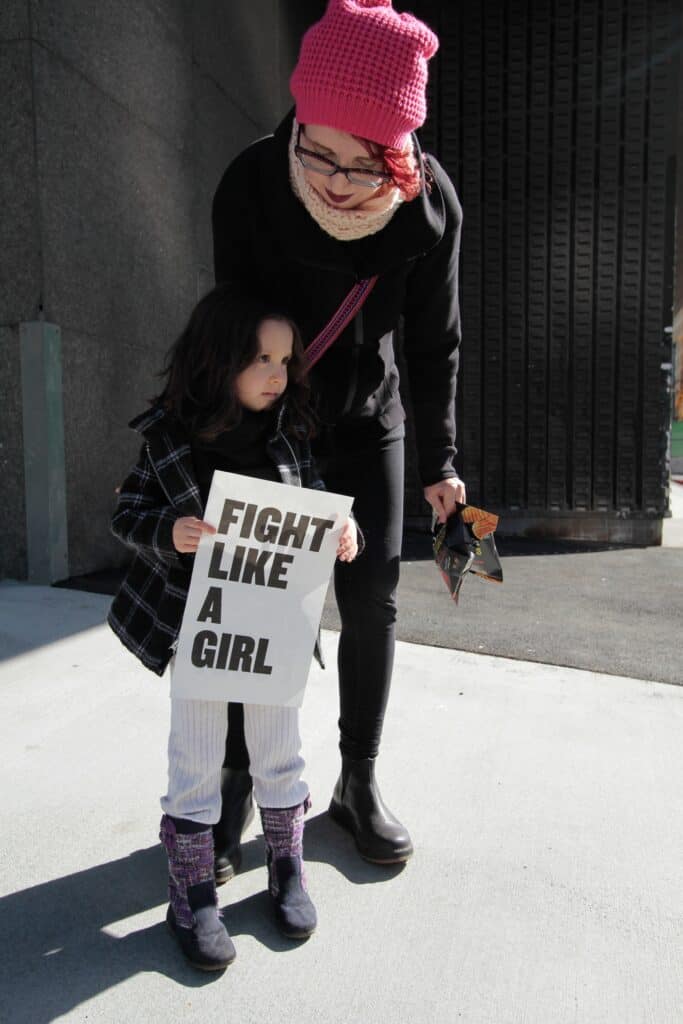Any woman knows what it’s like to be discriminated against. Even though the 19th Amendment demands that women be granted equal rights to men, we are often looked down upon, patronized, harassed, given unequal wages, or told we should be seen and not heard.
Although it can be tiring to consider that our struggle is not over, it’s essential to acknowledge that our rights are only as strong as they are because of the hard work of many women and men over the years.
The Right to Vote: Women’s Suffrage
Women’s Suffrage in the United States received its first push, strangely enough, in the United Kingdom. In June 1840, the World Anti-Slavery Conference met in London, but women delegates were denied the right to participate. Two of these women, Lucretia Mott and Elizabeth Cady Stanton, went on to be influential organizers of the drive to grant women the right to vote in the United States, organizing the first women’s rights conference in Seneca Falls, New York, eight years later.
It was at the Seneca Falls Conference that the suffrage movement in the United States began. Over the course of three days in July 1858, over 300 participants discussed the problems women faced in society of the time as well as property rights and the right to vote. Appropriately, the first day was set aside for women only, and men who showed up to support the aims of the Conference were told that they could only watch, and could not otherwise participate.
The Declaration of Sentiments, written primarily by Stanton and debated at length during the Conference, was signed by 100 of the participants, including more than 30 men. The Declaration set the agenda of the various women’s rights groups for decades to come. Interestingly, however, it almost did not include a resolution for women’s suffrage. That resolution was only kept after Frederick Douglas, a freed slave and well-known abolitionist, spoke up about the importance of the concept.
Women around the country organized and ran campaigns for national suffrage over the next three decades, but when a proposed amendment brought before Congress in 1878 was defeated they focused their efforts on suffrage at the state level instead. Campaigns in a number of states succeeded before women were finally granted the right to vote by the U.S. with the passage of the 19th Amendment in 1919 and its ratification a year later in 1920.
Rights in the Trump Era: The Women’s March

Nearly one hundred years after women earned the right to vote, the election of America’s 45th president, Donald Trump, sparked massive protests across the country. Countless people felt they had no choice but to act in response to his discriminatory remarks against women and minorities, perceived lack of ethics, and pandering to the super-rich in the United States and abroad.
Women’s rights, in particular, were seen as under threat. In response, several individuals organized marches using Facebook to protest. The largest of these began to coordinate their efforts, and the result was a massive march in Washington, D.C., which took place the day after Trump’s inauguration and drew more than 200,000 protestors. It was joined by sister marches across the globe, with the estimated total participants numbering between 3 and 5 million in the United States alone.
More than just a march to protest the erosion of respect for women, the first Women’s March demanded reproductive rights, an end to discrimination based on gender, religion, race, or sexual and gender identity, rights for workers, and reform in immigration and health care. That broad focus has remained central to the new organization, with their website defining them as “a women-led movement providing intersectional education on a diverse range of issues.”
Since the first march in 2017, the organization has hosted a global march each year. Although these marches did not draw the attention of the crowds of the first, they show that women in the United States remain passionate about their place in society and their inalienable rights.
You Can Make a Difference!
Women have come a long way since the 1800s, but there’s always more work to do, and every voice counts.
If you’re inspired by what you’ve read in this article, take action! There are as many ways to get involved as there are women. Join a march or help organize one. Call your member of Congress and ask how they’re working to support women’s rights in the modern era. Even speaking up the next time you overhear a discriminatory or offensive remark can make a huge difference in someone’s life.
Whatever you choose, stay safe, stay proud, and stay active. We’re with you every step of the way!



